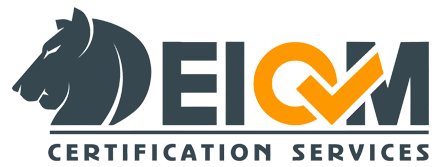ISO 10015 is an international standard developed by the ISO Technical Committee on Quality Management and Quality Assurance. It provides guidelines for training organizations to establish, implement, maintain, and improve their training processes. This standard emphasizes the importance of effective training programs that contribute to the achievement of organizational objectives and enhance the competence of individuals.
What is ISO 10015?
ISO 10015 is an international standard developed by the ISO Technical Committee on Quality Management and Quality Assurance. It provides guidelines for training organizations to establish, implement, maintain, and improve their training processes. This standard emphasizes the importance of effective training programs that contribute to the achievement of organizational objectives and enhance the competence of individuals.
Key Principles of ISO 10015
ISO 10015 is built on several key principles that drive the effective implementation of training practices within organizations. These principles include:
Customer Focus
This standard encourages training organizations to align their training programs with the needs and expectations of their customers. By identifying customer requirements, organizations can develop tailored training solutions that address specific knowledge and skill gaps.
Competence Development
The standard emphasizes the development of competencies necessary for employees to perform their tasks effectively. ISO 10015 guides organizations in identifying training needs, designing competency-based training programs, and evaluating the effectiveness of training initiatives.
Process Approach
ISO 10015 promotes a systematic approach to training by outlining a clear process for planning, implementing, and evaluating training activities. By adopting a process-oriented mindset, organizations can ensure consistency and continuous improvement in their training practices.
Measurement and Evaluation
This standard stresses the importance of measuring the impact of training on individual and organizational performance. By implementing evaluation mechanisms, organizations can assess the effectiveness of their training programs and make data-driven decisions for improvement.
Benefits of Implementing
Implementing ISO 10015 brings numerous benefits to training organizations:
Enhanced Training Effectiveness
ISO 10015 helps organizations design and deliver training programs that are targeted, relevant, and impactful. By aligning training activities with organizational objectives and measuring their effectiveness, organizations can ensure maximum return on investment in training.
Improved Competency Development
This standard provides guidelines for identifying competency gaps and designing training programs to bridge those gaps. This leads to improved individual and team performance, increased job satisfaction, and a more skilled workforce.
Increased Customer Satisfaction
By aligning training programs with customer requirements, organizations can deliver training that meets or exceeds customer expectations. This enhances customer satisfaction and strengthens the organization’s reputation for providing high-quality training services.
Continuous Improvement
ISO 10015 promotes a culture of continuous improvement within training organizations. By regularly evaluating training activities and seeking opportunities for enhancement, organizations can adapt to changing needs and stay ahead in a competitive market.
Steps for Implementing ISO 10015
To implement ISO 10015 effectively, organizations can follow these steps:
Step 1: Understand the Standard
The first step is to familiarize yourself with the requirements and guidelines outlined in ISO 10015. This will provide a solid foundation for implementing the standard within your organization.
Step 2: Identify Training Needs
Conduct a thorough analysis of training needs within your organization. This involves identifying competency gaps, determining the skills and knowledge required for various roles, and prioritizing training initiatives accordingly.
Step 3: Develop Training Programs
Based on the identified training needs, design and develop training programs that align with organizational objectives. Consider various training methods, such as classroom training, e-learning, on-the-job training, and mentoring.
Step 4: Implement Training Programs
Implement the developed training programs using a structured and systematic approach. Ensure that trainers are qualified and competent, and provide resources necessary for effective training delivery.
Step 5: Evaluate Training Effectiveness
Establish evaluation mechanisms to measure the impact of training on individual and organizational performance. Collect feedback from trainees, monitor key performance indicators, and make data-driven decisions for improvement.
Step 6: Continuously Improve
Regularly review and improve your training programs based on evaluation results and feedback. Seek opportunities to enhance training effectiveness, address emerging needs, and adapt to changes in the business environment.
Integration with Other ISO Standards
ISO 10015 can be effectively integrated with other ISO standards, such as ISO 9001 for quality management systems and ISO 45001 for occupational health and safety management systems. By aligning these standards, organizations can create a comprehensive framework for managing quality, safety, and training within their operations.
Challenges and Considerations
While implementing ISO 10015 can bring significant benefits, organizations may face certain challenges. These may include resistance to change, lack of resources, and the need for cultural shift towards a learning organization. It is essential to address these challenges proactively and foster a supportive environment for successful implementation.
Case Studies: Successful Implementation of ISO 10015
Several organizations have successfully implemented This standard and reaped the benefits of effective training practices. These case studies highlight real-life examples of organizations that have embraced ISO 10015 and achieved improved training effectiveness, enhanced competencies, and increased customer satisfaction.
Conclusion
ISO 10015 provides a valuable framework for training organizations to develop, implement, and evaluate effective training programs. By following the principles and guidelines outlined in the standard, organizations can enhance their training effectiveness, improve competencies, and drive continuous improvement. Implementing ISO 10015 brings numerous benefits, including enhanced customer satisfaction, improved employee performance, and a competitive edge in the market.
Contact EIQM
To contact us, please fill out the form below. We will contact you as soon as possible. You can also apply through this form if you would like to receive system certification or representation of EIQM Certification Body.

